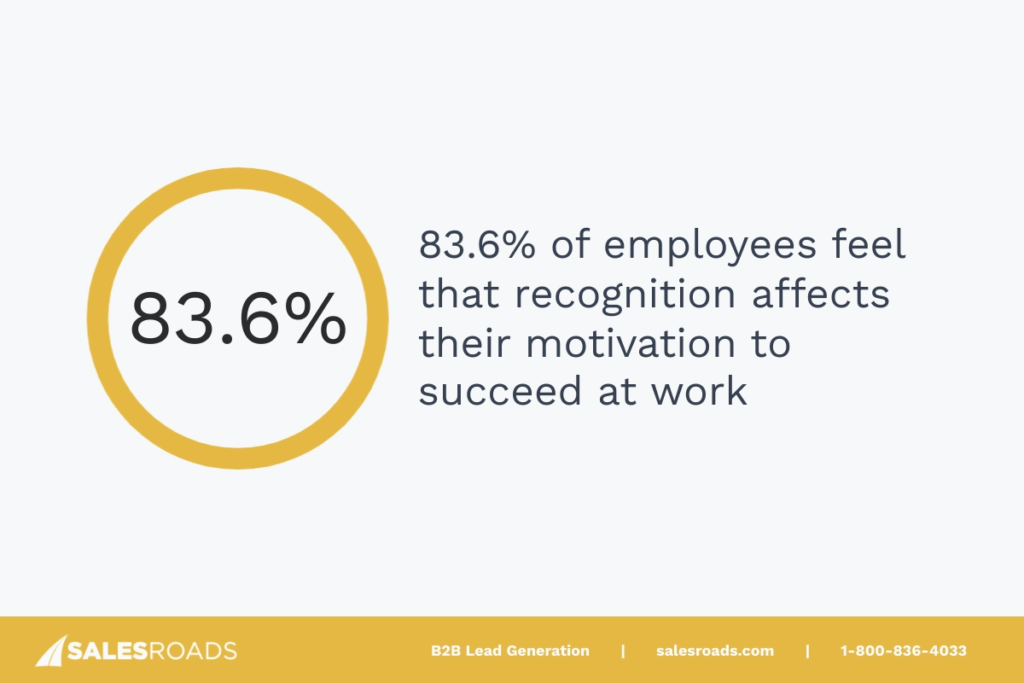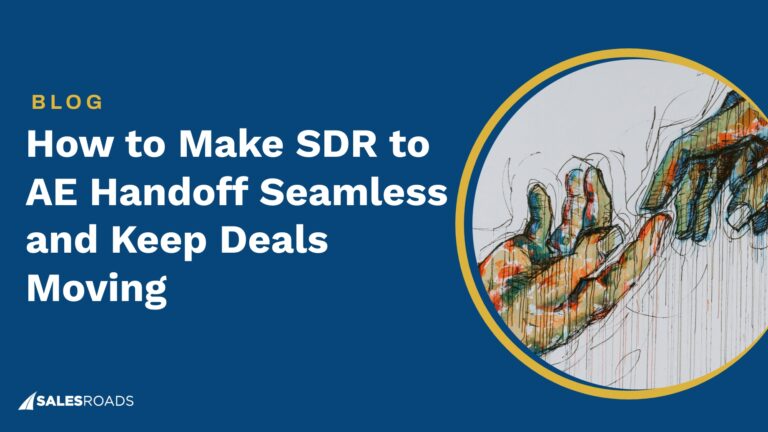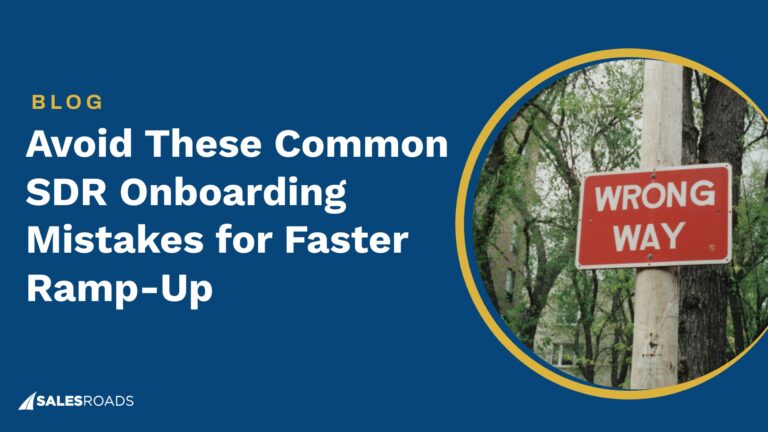In sales, rejection isn’t just a possibility; it’s a daily reality. Even top-performing SDRs hear “no” far more than they hear “yes.”
For sales leaders, the real challenge isn’t just hitting quotas; it’s keeping their SDR team energized, confident, and focused despite the inevitable setbacks.
This presents a critical challenge: How do you keep your SDR team motivated and productive when they’re facing constant “no’s”?
Building a Resilient Sales Mindset for SDRs
Resilient SDRs don’t just survive the rejection gauntlet; they thrive in it. They understand that every “no” is simply data, not a personal verdict on their worth or abilities. But this mindset doesn’t develop overnight.
It requires intentional sales leadership, structured support systems, and practical tools that help your reps bounce back stronger after each setback.
Helping SDRs Reframe Rejection as Part of the Sales Process
One of the most powerful shifts you can create for your SDRs is helping them see rejection as a neutral business outcome rather than a personal failure.
Start by sharing transparent win-rate data with your team. Show them that even your top performers hear “no.” Create a culture where discussing rejection rates is as normal as talking about the weather.
Consider implementing weekly “rejection celebrations” where team members share their most creative or educational rejections. This normalizes the experience and helps remove the shame factor that can paralyze less experienced reps.
Use real examples from your successful reps who pushed through multiple rejections before landing significant opportunities. Create case studies that show the full journey, not just the final win, but the 15 or 20 “no’s” that came before it.
When rejection becomes a source of learning rather than just disappointment, your reps will approach it with curiosity instead of dread.
Encouraging Emotional Intelligence and Self-Awareness in Sales Roles
90% of top performers at work have high emotional intelligence, yet many sales organizations overlook this crucial development area.

SDRs with high emotional intelligence don’t just handle rejection better; they also build stronger prospect relationships and make more strategic decisions under pressure.
Start by helping your SDRs develop self-awareness around their emotional responses to rejection. Encourage them to notice their internal dialogue after a difficult call.
Do they immediately assume they did something wrong? Do they start questioning their abilities? Once they recognize these patterns, you can help them develop healthier response strategies.
On the Sell Like A Leader podcast, Victoria McGlone highlights the fundamental importance of nurturing emotional intelligence (EQ) and social intelligence (SQ) for new graduates entering the workplace. She also states that empathy, which she describes as “the soft glue that holds sales teams together,” can have a massive impact on a leader’s effectiveness
You can listen to the episode here:
Teaching Stress-Management and Recovery Techniques
Sales is inherently stressful work, and without proper recovery techniques, even the most resilient reps will eventually burn out.
Highly emotionally intelligent employees take significantly fewer sick days, highlighting the connection between emotional well-being and physical health.
Incorporate stress-management training into your onboarding process from day one. Don’t wait until reps are struggling. Give them the tools they need to manage stress proactively. This investment pays dividends in retention, performance, and overall team morale.
Create structured recovery periods throughout the day. This might mean scheduling 10-minute breaks between intensive calling blocks, providing access to quiet spaces for decompression, or implementing team-wide “mindfulness moments” where everyone takes a few minutes to reset.
Also, consider implementing peer support programs where experienced reps mentor newer team members on stress management and emotional regulation. Often, advice from someone who’s “been there” carries more weight than guidance from managers who haven’t been in the trenches recently.
Creating a Positive and Supportive Work Environment
When your team faces constant “no’s” throughout their day, the work environment becomes their lifeline, determining whether they bounce back stronger or burn out completely.
A positive work environment acts as a buffer against the emotional toll of rejection while amplifying the impact of every small win. A recent research reveals that 83.6% of employees feel that recognition affects their motivation to succeed at work, making it a critical tool for sales leaders who want to keep their SDRs energized and focused on results.

But creating this supportive atmosphere isn’t about hollow motivational posters or empty “rah-rah” sessions. It requires intentional strategies that address the unique psychological challenges your SDRs face daily.
Celebrating Wins to Boost Morale
Recognition shouldn’t wait for huge deals or major milestones. By then, your SDRs might have already mentally checked out from weeks of unacknowledged hard work.
The magic happens in celebrating micro-wins: booking that hard-to-reach prospect who’s been dodging calls for months, delivering a creative pitch that made a cold lead laugh, or simply showing up with energy after a particularly brutal day of rejections.
The science behind this approach is compelling. According to research, 77.9% of employees would be more productive if they were recognized more frequently.
For SDRs specifically, this frequent recognition becomes even more critical because their daily experience is largely defined by negative responses.
The timing of recognition matters just as much as the recognition itself. Research shows that authenticity and timeliness are ranked as the top variables that make recognition feel meaningful to employees.
This means catching your SDRs in the moment when they do something noteworthy, not waiting for the monthly team meeting to bring it up when the impact has already faded.
Fostering a Sense of Purpose and Mission Alignment
SDRs who understand the bigger picture behind their daily activities show remarkable resilience in the face of rejection.
When reps can clearly see how their role impacts company growth, client relationships, and brand reputation, they develop a sense of purpose that becomes a powerful motivation source when prospects say no or leads go cold.
Effective mission alignment starts with storytelling. Share specific examples of how SDR efforts have directly contributed to major wins: the initial outreach that led to a six-figure deal, the persistence that turned a cold prospect into a long-term client, or the market insights gathered through prospecting activities that informed product development.
It should also include transparency about company goals and how SDR performance contributes to achieving them.
When SDRs understand that their prospecting efforts are helping the company expand into new markets, support additional jobs, or fund innovation that benefits customers, their daily work takes on greater significance.
Providing the Right Tools and Training for Success
One of the biggest challenges for sales leaders is creating an environment where SDRs feel supported and equipped to handle the pressure.
Giving your team the right tools and training isn’t just a nice-to-have; it’s essential for building a confident, motivated, and successful sales force.
Using CRM Software and Automation to Reduce Admin Fatigue
Manual data entry is a major time sink that pulls SDRs away from what they do best: building relationships. When your team is stuck logging every call, email, and note by hand, they have less time to connect with prospects.
In fact, a study by Salesforce found that sales reps spend only 28% of their time actually selling, with the rest of their day bogged down by administrative tasks.

Automating these repetitive workflows is a game-changer. Implement a robust CRM system that auto-logs calls and emails, and use sales engagement platforms to automate follow-up sequences.
This frees up your SDRs to focus on high-value activities, like engaging with potential customers and perfecting their pitch, which ultimately leads to better performance and higher morale.
Regular Skills Development to Keep SDRs Confident and Engaged
The skills that worked a year ago might not be as effective today.
Regular, ongoing training is crucial for keeping your SDRs sharp and confident. Instead of just a one-time onboarding, schedule monthly or bi-monthly sessions that go beyond the basics.
Cover topics like advanced objection handling, active listening, and new prospecting techniques. Employees who feel their company invests in their professional development are more engaged and productive.
By consistently providing new skills and tactics, you empower your SDRs to handle tough conversations and adapt to any challenge, transforming a high-rejection environment into a continuous learning experience.
Leveraging Lead Generation Services to Provide Quality Prospects
Nothing kills an SDR’s motivation faster than chasing bad leads. When they’re consistently dialing numbers that go nowhere or reaching out to prospects who aren’t a good fit, their energy and confidence can quickly dwindle.
Partnering with a high-quality lead generation service can dramatically improve their morale and efficiency. This ensures your SDRs have a steady pipeline of promising leads who are more likely to be interested in your product or service.
When your team is working on quality leads, they’ll see more positive outcomes, making the rejections they do face feel less impactful and more manageable.
Structuring Incentives and Career Growth Opportunities
It’s not enough to simply hand them a headset and a list of numbers; they need to know their hard work is valued and that they’re on a path toward something bigger.
By intentionally structuring incentives and clearly defining career progression, you create a culture where ambition is rewarded, and high rejection isn’t seen as a dead end, but a challenge worth tackling.
Crafting Incentives That Motivate Without Burnout
Monetary compensation is a foundational motivator, but relying solely on it can lead to burnout and a transactional work environment. According to research, sales organizations have a turnover rate of 35%, significantly higher than the average for all other industries.
This is often linked to the high-pressure, competitive nature of the job. To combat this, you need to think beyond the bonus check.
Consider a reward structure that includes experiential prizes like an extra day off, a learning stipend to attend a conference, or a lunch with a top executive or sales leader.
This approach recognizes their effort in a more personal and meaningful way, signaling that you value their well-being and professional growth, not just their numbers.
This avoids pushing reps into “unhealthy overdrive” just to hit a single metric, creating a healthier, more sustainable team.
Showing Clear Career Progression Paths Within Sales Teams
High-rejection environments become far more tolerable when your team can see a clear path to the next role, whether that’s an Account Executive or a leadership position.
A LinkedIn Workplace Learning Report found that employees who have a greater ability to make an internal move are 75% more likely to stay at their organization, a rate nearly 20% higher than those who don’t.
To implement this, share success stories of past SDRs who have moved up. Outline exactly what skills they need to acquire and what metrics they need to hit to get there.
This transparency turns a vague promise into a tangible goal, giving them a roadmap for their professional journey and a compelling reason to stick with it through the tough times.
Leadership Techniques That Sustain Long-Term Motivation
The most effective sales leaders understand that their role is not just to manage metrics but to actively coach and inspire their team through the inevitable challenges of the sales cycle.
By leading with empathy and transparency, you can create a culture where resilience is the norm, and a high-rejection environment is seen as a shared challenge to overcome. This kind of leadership is the foundation of a motivated, high-performing SDR team.
Leading by Example and Demonstrating Commitment to Sales Success
Nothing inspires an SDR more than seeing their leader in the trenches with them.
When a sales leader picks up the phone, joins a difficult discovery call, or takes on a challenging account, it sends a powerful message of unity and shared commitment. This hands-on approach breaks down the hierarchy and shows your team that you understand their daily struggles.
Employees who feel their managers are engaged and supportive are more likely to be motivated and less likely to experience burnout.
By actively participating in the sales process, you earn your team’s respect and show them that success isn’t just about the numbers; it’s about a collective effort.
Recognizing and Addressing Signs of Burnout Early
Burnout is a silent killer of motivation and productivity. A study found that 77% of employees have experienced burnout in their current role. As a leader, it’s your responsibility to be vigilant and empathetic.

Pay close attention to subtle warning signs in your SDRs, such as a sudden drop in call activity, increased irritability, or withdrawal from team interaction. Don’t wait for a formal complaint. Address these issues proactively by initiating a private conversation.
You can offer support by adjusting workloads, encouraging them to use their PTO, or simply providing a listening ear.
By creating an environment where it’s safe to discuss these feelings, you show your team that their well-being is a priority, building a foundation of trust that helps them bounce back from both rejection and exhaustion.
Bottom Line
Sometimes, the most profound and lasting motivation doesn’t come from training or even a bigger paycheck. It comes from connection.
Sales leaders are often so focused on the “what” that they forget the “why.” Why is your SDR doing this grueling, high-rejection job every single day?
David Krieger, founder of SalesRoads, shares a real-world story about one of his early SDRs that illustrates this perfectly. There’s a lot to learn from it:











